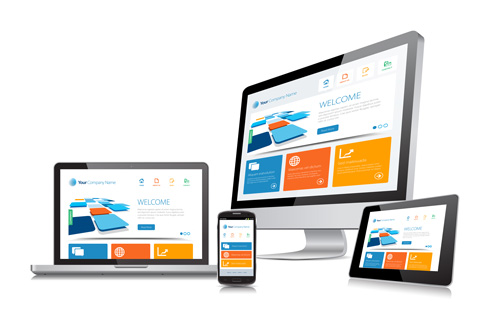The decision to hire a website design pro to update your site or create a new one yourself depends on your skill level, budget, and time. Years ago, hiring a pro to get results was the only option. Technology changed all that with the surge of online web building tools now available to anybody. Those lacking the know-how can build decent websites using online building tools such as Wix and Weebly, but are they any good? Should you opt for this option? Let’s look at the reasons for and against the DIY route or the more expensive pro website design option.
WordPress is the go-to website development application, and most websites use it. Many very successful sites built with WordPress impress even the most ardent supporters of manual coding.
The visual page editors used in most online builders for website development allow users to create functional sites within the parameters set by the maker, but their lack of flexibility puts a stranglehold on creativity. It’s the limits within the editor that make this type of online builder best for smaller websites.
WordPress Content Management
WordPress is a powerful content manager and gets better with every update. Online builders allow drag and drop to move elements around the page to create the best website design while WordPress uses themes coded by designers and contributed to their massive themes library.
They also use the concept, WYSIWYG or what you see is what you get. That means while you design, each move or change gets updated in real time and you can review your changes before publishing them. For many, the review aspect gets tiring because to view every change you must reload the page. This takes time and gets frustrating.
On the brighter side if you know HTML you can update or make wholesale changes to themes to your liking. If you make a mistake here, you risk breaking your site. Backups of the theme’s code make sense before starting any editing.
If editing themes doesn’t interest you, you can search for another one from the thousands available. Or, you can take the leap and go pro. That is, if your budget allows it. WordPress is free with hosting costs in the five to ten dollar per month range. Professional websites can hit hard with most starting around $2000 to over $100,000.
Informational or E-Commerce?
The type of website design best for your business depends on what your business is about. It’s essential for all businesses today to have an online presence, regardless of type. If your business relies on adding new customers or servicing existing ones, a simple site highlighting your business and its function should do the job.
Basic contact information with articles and suitable graphics with video would suffice. Adding pricing, products, and a mission statement goes a long way toward establishing your online presence. Be sure to update the site as needed and let no information get stale. Keep your site clean and professional looking to make the best first impression.
E-commerce sites handle financial transactions, which makes them more complicated and security is a major issue. You need to get this part right. Don’t scrimp on encryption and other necessary security protections for your customers. You should get a website development professional involved at this stage.
If your business is e-commerce, don’t trust WordPress to get the job done. While plugins from WordPress offer the ability to perform e-commerce functions, this should be in the hands of a professional who knows how to secure your site and protect customer information.
This option isn’t cheap, but it’s less expensive than losing your business because potential customers don’t trust your site. Data breaches and hackers hit the news almost daily. Don’t let your site be a victim and risk losing all you worked for.
Mobile Ready is Today’s Standard
The transition from Internet sites to mobile-ready sites is in full swing. Your web presence requires a mobile-ready site or you will find your online business relegated to obscurity. Recently, Google added mobile readiness as a ranking factor. Don’t ignore the importance of ranking for mobile. Decide today to correct this if you haven’t already.
Most of us see non-responsive sites on our smartphones that require scrolling and enlarging to see the content. This is an example of a non-mobile ready site. Imagine how your customer reacts to seeing this.
Responsive Websites
With the emphasis on mobile-ready sites, the face of website development changed and forced designers to code their sites for easy viewing on all devices. Tablets, smartphones, and computers should render your site regardless of what device your customer uses.
Responsive sites don’t force scrolling or enlarging and look clean and professional. Unless you’re a proficient coder, don’t risk converting your site on your own. This is for a professional. Most WordPress themes offer this function so the coding won’t be an issue. If you’re opting for professional website design, it’s likely included without asking, but ask you should.
Integrate Social Into Your Design
Part of your overall website development strategy should include social media in a way that invites customers to take part. People love to interact, and your site is the place to keep them informed. Use social media to expand your reach and keep your presence in the minds of customers. An effective website design helps promote participation.
The decision to have a pro design your website or on your own depends upon your willingness to take the time and put forth the effort. If you have the both, the answer is obvious. Professional website design uses updated code techniques but at the highest cost. In either case, your online presence should show the best of what your company offers in the most efficient way possible.
D2 Branding provides a customized web design experience for businesses to capture new customers, interact with current customers, solve customer service problems and create loyal, raging fans!
